- Meringue is a sweet food used as a dessert or dessert topping.
- Meringue is made from naturally gluten-free ingredients.
- Ready-to-use meringue powders are also available.
- These are naturally gluten-free, but gluten-rich additives might be present.
Anyone with a sweet tooth loves meringue. Why wouldn’t you? It’s foamy, sugary, and creamy – and oh-so-delicious! Plus, it goes well with desserts like cakes and cupcakes and works as a dessert itself. The textures, too, will make you fall in love. But is meringue gluten-free and safe?
Meringues can be cooked in different ways, but the ingredients used in bakeries and at home are the same, and they are naturally free from gluten.
Also, there are meringue powders available in the market, free from gluten, too, unless they have gluten-containing additives.
Is Meringue Gluten Free? What is Meringue?
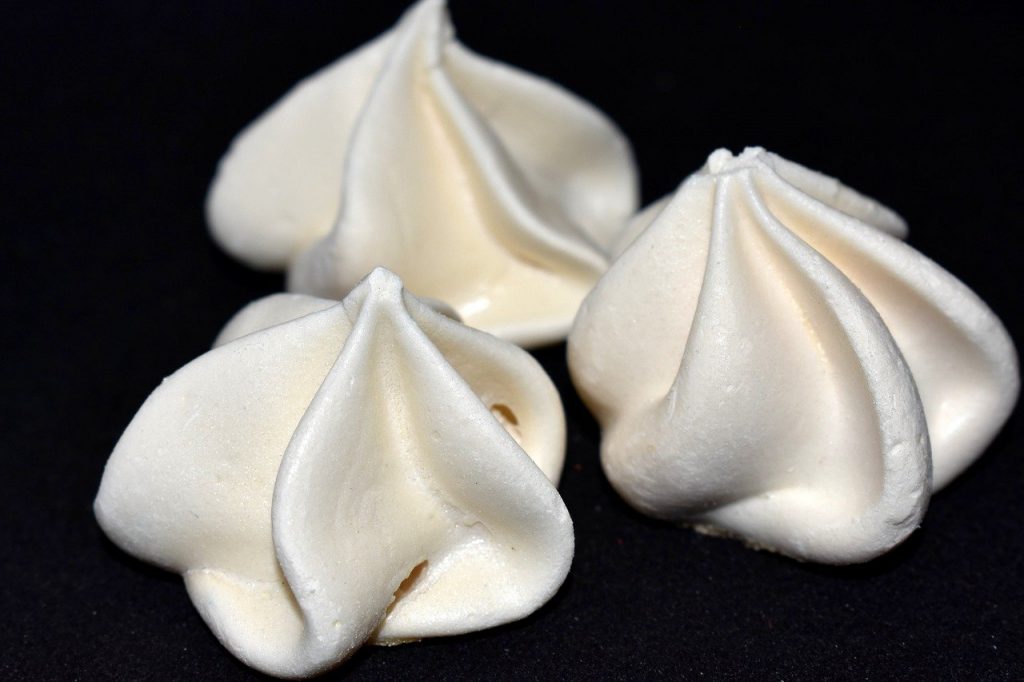
Do you love baked goods? Then you must have tried meringue at some point. They sit on cakes and cupcakes in the form of peaks of different consistency and stiffness.
Sometimes, they’re baked into crispy cookies or chewy-crunchy pavlovas. If you have celiac disease, you don’t have to give up on meringue!
Do you know what meringue is made of? If you are not into cooking and baking, then here’s a surprise for you:
Meringue is made using nothing but eggs and sugar!
Yes, just two ingredients can be turned into so much deliciousness. The two are beaten together to form a foamy dessert that we all love so much!
Let’s look at these two ingredients: egg whites and sugar. Both of these are absolutely free from gluten. So, there is no chance of meringue having any gluten content.
Of course, you can add additional ingredients like food colors and flavoring or binding agents, all of which have gluten-free variants.
There is another way of making meringue. You can buy meringue powders and get whipping after adding water. You may also have to add sugar.
These powders primarily consist of dehydrated egg whites, a gluten-free ingredient. There might be preservatives and other additives, about which you should be careful.
Are you severely allergic to gluten? Be careful with Meringue
Does even trace gluten trigger allergic reactions for you? Then you need to be more cautious.
For instance, if you’re making meringue at home from scratch, ensure that the sugar you are using is not manufactured or processed in facilities where gluten products are handled.
The same goes for additives that you might want to use in the meringue. It’s ideal to buy products that are labeled gluten-free.
This label shows that the product has been tested and found to have less than the permissible gluten level, i.e., 20 ppm. You should at least check the ingredients list thoroughly.
Some meringue powders, too, are labeled or marketed as gluten free. If you are allergic to eggs or follow a vegan diet, egg-free meringue powder varieties are your only option.
But don’t worry! They don’t make much of a difference in terms of taste and texture. Even bakeries are known to use such powders.
Gluten Free Meringue in Bakeries?
Speaking of bakeries, it’s hard to tell if a bakery you choose ensures a gluten-free environment while making meringue – or any dessert.
After all, a bakery has to deal with flour, and unless they are making special efforts to take care of customers with celiac disease, the chances of cross-contamination are high.
So, at the time of picking a bakery from where you want to get your meringue, make sure to ask about their initiatives to make their cooking and baking environment gluten free.
Cross-contamination is also a possibility while making meringue in your home kitchen. So, you have to be alert in your own kitchen.
Gluten Free Meringue Powder Brands
Meringue is fairly easy to make at home. But if you don’t want to get into the mess of separating egg whites from yolks to get started, you can choose meringue powders available readily in the market.
These are primarily made of dehydrated egg white, turned into powder, along with some other additives.
Here is a list of the most trusted meringue powder brands that are either marked or marketed as gluten-free:
a) Judee’s Meringue Powder Mix
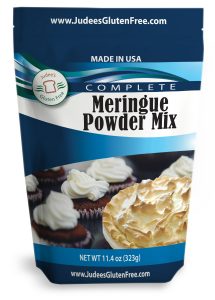
Judee’s Meringue Powder Mix is proudly gluten free, according to the packaging of the product. It is not only made using non-gluten ingredients but is also manufactured in a gluten free environment.
This powder is also free from preservatives. It’s easy to use, as you just need to add water to make meringue.
b) LorAnn Meringue Powder
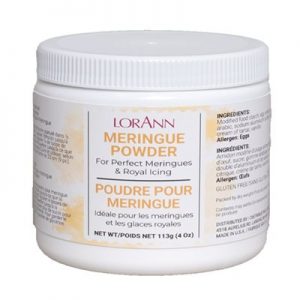
The meringue powder by LorAnn is considered a healthy option. It does not even have any sugar content and needs you to add water and sugar to make icings for cookies, cupcakes, and other desserts.
The label of the product mentions that it is gluten free, making it safe for people allergic to gluten.
c) Chefmaster Deluxe Meringue Powder

The Chefmaster Deluxe Meringue Powder is the ideal ingredient for making meringue. It is a safe alternative to raw egg whites and can be turned into stiff icing for your desserts.
You need to add water and sugar to it to make light and airy meringue. The container label also bears a tiny “gluten-free” tag.
d) Meringue Shop Meringue Powder
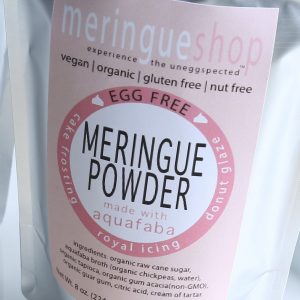
If you are on a plant-based diet or allergic to eggs, the Meringue Shop meringue powder is the ideal product for you. It can be made into delicious and healthy meringue of any consistency or texture.
The best part is that it is free from gluten content, and the container proudly flaunts the “gluten free” label.
e) Sweet Frosted Cookies Organic Meringue Powder
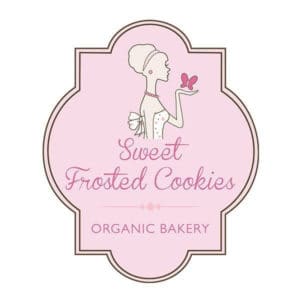
Sweet Frosted Cookies is a brand with three different meringue powders, one of which is egg-free and the other is entirely vegan, while the third one has a traditional egg white powder.
The website of the company clearly mentions that Sweet Frosted Cookies, as a brand, is gluten free and also organic.
f) Vör Vegan Meringue Powder
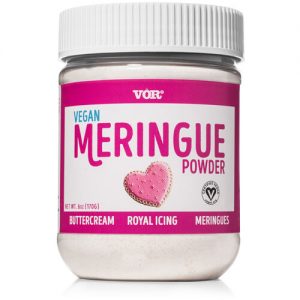
The Vör Vegan Meringue Powder is a healthy meringue powder option free from egg content and is vegan. You can turn it into royal icing and buttercream, too, due to its pleasant taste and texture.
While the product isn’t certified as gluten-free, it is marketed because it is naturally gluten-free.
These alternatives to raw egg whites are considered a healthier option because, with raw eggs, there’s a possibility of salmonella. One in twenty eggs can be assumed to be contaminated with salmonella.
So, while the chances of getting salmonella may be low, these meringue powders are considered healthy.
A Little about Meringue
When you taste meringue for the first time, it will be hard to believe that this piece of heaven in your mouth is made of two basic ingredients – egg whites and sugar.
Some bakers like to add vanilla essence or cream of tartar. Others mix in a dash of vinegar or lemon. It may also have salt, gelatin, and more.
Truth be told, meringue is extremely versatile. As a base, it’s quite like a canvas; it can reflect your wild imagination as you add anything from apple juice to orange zest to the light foam.
It can enhance different types of desserts like mousse and souffle or can itself be turned into desserts.
Uses of Meringue

Broadly speaking, the use of meringue can be divided into three categories:
- Cookies
Meringue cooked in the oven can give you dry and crisp cookies known as forgotten cookies. That’s because you can leave them in the oven long after they have been cooked.
Most people make these into cute shapes and store them in containers to last for at least a week.
- Desserts
Meringue is the base of some of the most fabulous desserts, from pavlova to baked Alaska, from lemon meringue pie to macarons – and so many more! It is cooked at high temperatures in such recipes to harden the meringue or brown texture the peaks slightly for some crispiness and flavor.
- Decoration
Meringue is often used in cookies and cakes as icing or frosting. These foamy, marshmallowy toppings can add creaminess to any dessert and also make it the prettiest thing in the world!
They can even be piped on top of fruits and crisp baskets. Sometimes, they are torched a little for the browned up edges. They are often used as decoration.
Types of Meringues
The basic meringue, i.e., a mixture of egg whites and sugar beaten together into fluff, is traditionally made three ways. These affect the texture of the meringue and the duration for which the foamy peaks can keep standing.
Wondering how egg whites and sugar can be beaten differently? Let’s find out!
1. French Meringue
The French meringue is the softest in texture, which means that the peaks tend to lose form earlier than the other two types do. It is also the lightest and easiest to make.
You just have to put superfine sugar and egg white together and whip them to form a light-as-cloud meringue. It’s the basic form of meringue.
2. Swiss Meringue
The Swiss meringue is the densest and is great for crispy pie cake layers or toppings.
It’s a little harder to make than the French meringue, as you need a double boiler setup, i.e., the bowl in which you’ll beat the egg whites and sugar should be set on a pot of simmering water to increase the meringue volume.
3. Italian Meringue
The Italian meringue is more stable than the other meringues and also more challenging to make. For this, you first have to make sugar syrup, heating it to 236-240 F.
The syrup will then have to be beaten into egg whites for silky, glossy, and stable peaks that are perfect for mousses and buttercreams.
These are the three basic forms of meringue – traditionally speaking. But making meringue has come a long way since it was first made, and now there are other forms of it, including the vegan meringue.
There’s no need to scrunch your nose at this. It is a healthy option for those allergic to eggs.
4. Vegan Meringue
Vegan meringue is an imitation meringue with aquafaba as the base ingredient, with a dash of vinegar. It may or may not contain sugar. Potato protein may be used as the base, too.
You have to use water to turn it into a stiff meringue. It offers similar characteristics to the regular meringue. But it may get burnt easily.
5. Dried Egg Meringue Powder
Meringue powder, made out of dried egg whites, is a baking substitute that can replace egg whites in any meringue recipe. All you have to do is add water to the powder to get the ideal consistency.
You may also need to add sugar, depending on what is present in the meringue powder that you purchase. No matter what type of meringue you choose, it should be free from gluten content.
The only way meringue can have gluten is if the additives used contain gluten.
Let’s not rule out the possibility of cross-contamination. There’s no way to test the final product, even if gluten-free ingredients are used.
Is Meringue Safe?
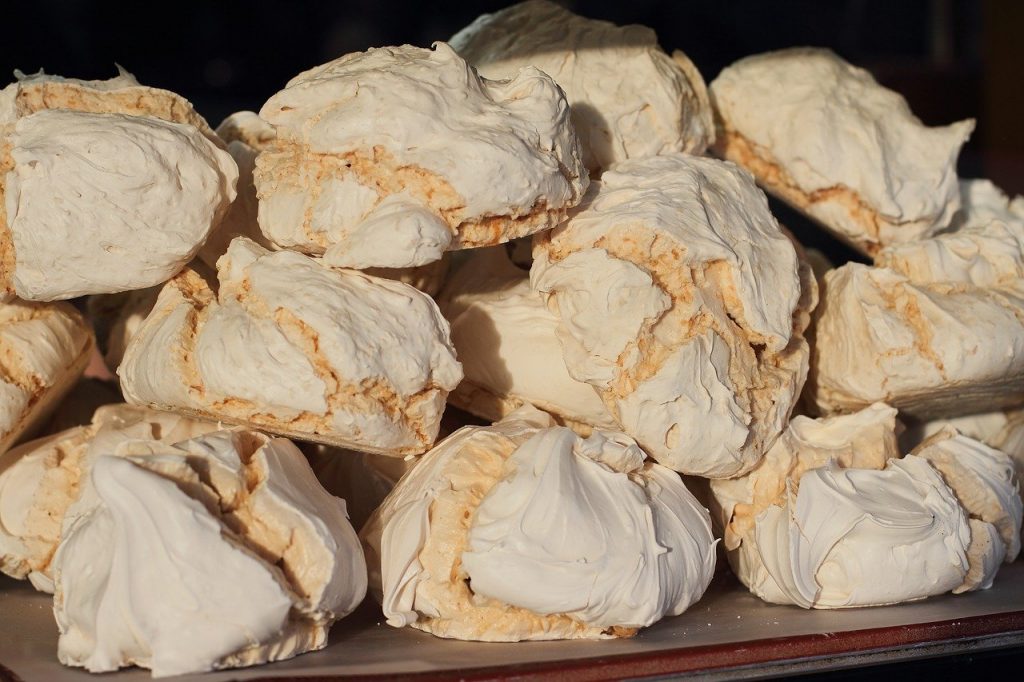
Meringue is delicious and irresistible – and it’s safe for you if you are allergic to gluten. However, you must have heard that there are some health risks associated with it.
Are these just rumors and myths? Not really. Though the chances of catching health problems are low, you should still be aware of them:
Salmonella
The main issue with meringue is that the recipes demand real egg whites. In its raw form, it can contain salmonella.
Symptoms of salmonellosis include diarrhea, fever, cramps, and more. Pasteurized eggs and meringue powders with or without egg content are salmonella-free options available in the market.
Or, you can cook eggs at 160 F to kill the bacteria. That is why baked, or cooked meringues are free from the risk of salmonella.
You can crank the heat up while cooking meringue so that the meringue slowly reaches 160 degrees. As for baking, you’ll need to perform it for around 15 minutes at 350 degrees.
Egg Allergy
Egg allergy is not as uncommon as you would like to think. Many people develop hives, sneezing, nasal congestion, chest tightness, vomiting, digestive issues, and other problems upon eating eggs.
These are all different egg allergy symptoms, and the only way to avoid them is by not eating eggs at all.
If your diet cannot include eggs because of allergic reactions, meringue is definitely not for you. 50% of the good old meringue is eggs!
The only other option is egg-free meringue powder. Many of them are vegan. They contain aquafaba or potato protein as the base, along with other egg-free ingredients.
High Sugar Content
Meringue contains lots and lots of sugar, and if you have diabetes or have chosen to cut out sugar from your life, eating meringue can be a problem.
From inflammation to obesity, from fatty liver to high blood pressure: many health problems can be caused by sugar, which is present in large amounts in the meringue.
There’s a way to enjoy meringue without consuming sugar – by using sugar substitutes in the recipe. If you want to use meringue powder, you should find a brand that doesn’t contain sugar.
Whether you use meringue powder or egg white, you can make sugar-free meringue using sweeteners like erythritol.
Gluten Free Meringue Cookie Recipe
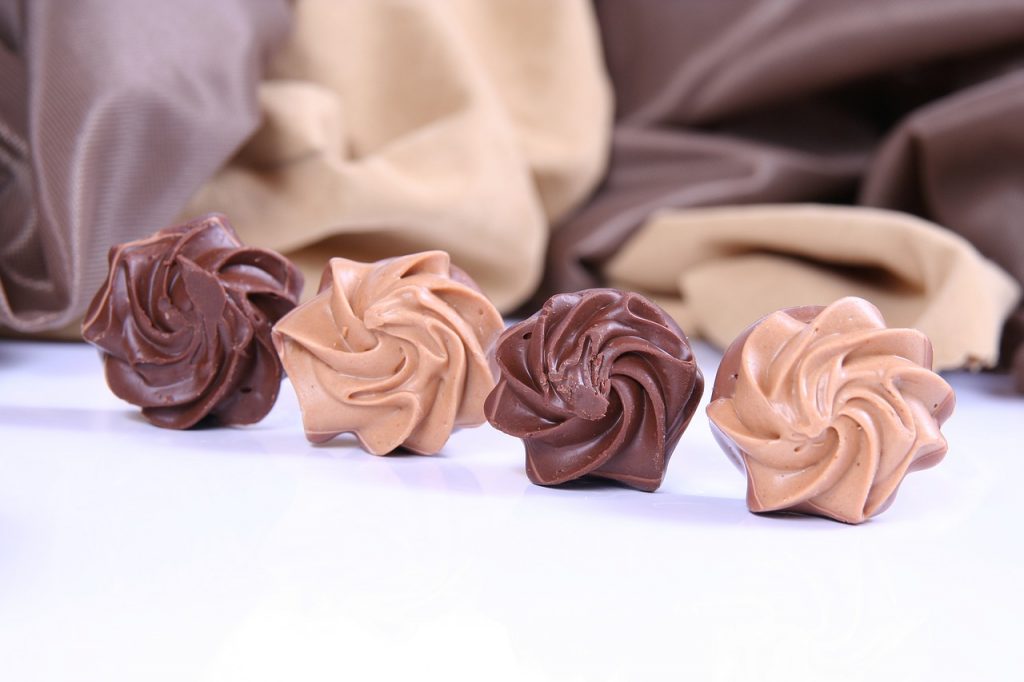
You must have heard of meringue cookies. But have you been misguided by the word “cookie” to give up on these sweet bites?
Don’t worry! Here’s a cookie that you won’t regret having, even if you’re allergic to gluten. Check out this incredible recipe for gluten-free meringue cookies that everyone will love!
Ingredients:
- Bittersweet chocolate (gluten free): 12 oz + 2 oz
- Vanilla extract: 1/2 tsp
- Lemon juice: 1 tbsp
- Egg whites: 4 pieces (large)
- Granulated sugar: 1 cup
- Walnuts (chopped): 1/2 cup
- Salt: A pinch
Instructions:
- Take 12 oz of chocolate, broken into pieces, and melt it in the microwave or on a double boiler on gentle heat. Let it cool and add vanilla, but don’t let it harden.
- Preheat your oven to 325 F and line place parchment paper along with three baking sheets.
- In a clean bowl, add salt, lemon juice, and egg whites and whisk them at Medium speed until the texture becomes light and foamy.
- After about a minute, crank the speed up to high, beat the mixture for 4-5 minutes, and add sugar slowly but steadily to get stiff peaks. You should be able to hold the bowl upside down!
- Add 1/3rd of the meringue to the melted chocolate and mix thoroughly. Then, fold the chocolate mix into the meringue gently. Then, fold in the remaining 2 oz of chocolate and walnuts.
- Put this meringue mixture in a pastry bag and pipe it out on the baking sheets into 1-½-inch circles. Make sure they are about 2 inches apart.
- Without wasting any time, put them in the oven and bake for 10 minutes. The crust of the cookies will be shiny but not brown, unlike regular cookies.
- Allow the meringue cookies to sit on the baking sheet for 10 minutes before you transfer them to a cooling rack.
Your gluten-free chocolate cookies made of meringue are ready! These are crusty on the outside and chewy on the inside, and if you store them in an airtight container, they will last for about two days.
Now, isn’t that a fun way to bake cookies that are absolutely safe for people with a gluten allergy?
Conclusion
Meringue, made at home or at bakeries, use naturally gluten-free ingredients. Meringue powders, with or without eggs, are free from gluten, too.
There are only two ways it can have gluten: cross-contamination and gluten-containing additives. So always do your research before buying.